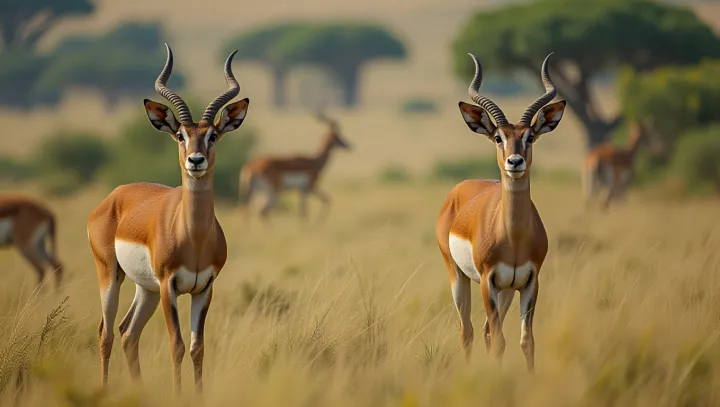Cautious Antelopes in the African Savanna

In the expansive landscapes of the African savanna, antelopes hold a pivotal role in maintaining the ecological checks and balances that define this biodiverse habitat. These graceful creatures, always on high alert, are adept at sensing danger, a critical survival trait in an environment teeming with predators. In the intricate web of predator-prey relationships, antelopes are not mere spectators.
Their vigilance and mobility alter the behavior of predators, doing so in ways that cascade through the ecosystem. As sentinels of the plains, their presence can modify predator hunting patterns, thus affecting population dynamics. Moreover, antelopes are integral to the savanna's health.
By grazing selectively, they contribute to plant diversity, mitigate undergrowth, and prevent bush encroachment, thereby promoting a diverse flora that supports a multitude of species. Their movements across the landscape help disperse seeds, fostering new life and contributing to ecological resilience. The conservation of antelope populations is not just for their sake but is crucial for the entire savanna biome.
Experts like Dr. Angela Malik, an ecologist, emphasize the importance of understanding and preserving these intricate ecological processes. 'Antelopes are architects of the ecosystem,' she explains, 'their roles are indispensable in sustaining the biological richness of the savanna.' As the climate changes and human activities encroach deeper into wild territories, the vigilance of antelopes becomes even more vital.
Their survival challenges mirror the broader issues facing global biodiversity. Efforts to protect these animals are also measures to safeguard the delicate balance of our planet’s ecosystems.
